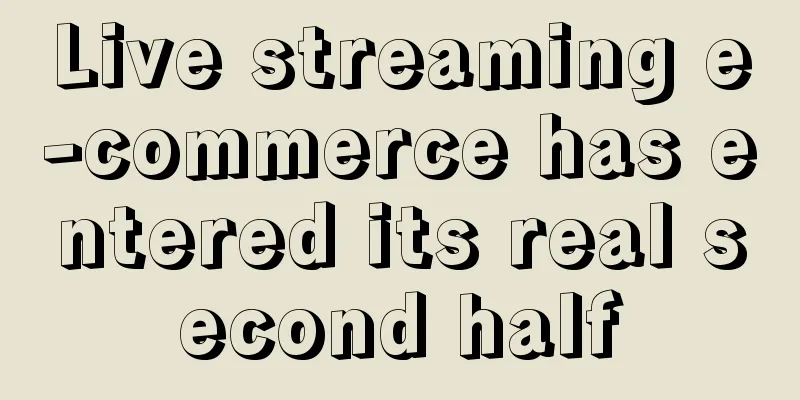Will the curse of lululemon be broken by Alo Yoga?

I often say that it will be difficult for China to have a Procter & Gamble in the future, but there will be many "lululemon". I have praised lululemon many times in my sharing, but the lululemon here actually refers to the lululemon before it went public in 2007. Lululemon's success today is all due to the strong brand crowd strategy and momentum established before 2007. After 2007, lululemon's growth relied on unlimited category expansion and potential energy consumption. Category expansion: From yoga pants, the company has expanded into yoga accessories, tops, sports bras and other fields, and also entered the men's, sports shoes and personal care markets. Geographic expansion: opening stores across the United States, expanding into markets in China, Asia Pacific, Europe, the Middle East and Africa. The latest number is 711 stores worldwide. Although the financial report figures have been good for a long time, it has been increasing momentum by diluting brand potential and unlimited capital expansion, but one day the capital will be exhausted. So since the year before last, I found that lululemon's growth rate began to slow down: In the North American market, where lululemon is based, revenue increased by 29% year-on-year in 2022, and the growth rate dropped to 12% in 2023. According to the latest data from the first quarter of 2024, the growth rate of the North American market was only 3%. It is obvious that lululemon is no longer selling well in North America. I have always felt that this is a trade-off game between brand potential and kinetic energy. When potential energy is converted into kinetic energy, it will be diluted. When the brand expands and sales increase in volume, the core will be diluted. However, if the kinetic energy cannot be released, the brand will become small and beautiful, but unable to break through the circle quickly. During the process of brand growth, if you change from your differentiation strategy to a scale-driven cost leadership strategy, a new group of brands will begin to cut into your market share. So, what did those people in North America who used to buy lululemon buy now? It's Alo Yoga. I found the following picture online. During the Black Friday period in 2022-2023, users who originally purchased lululemon went on to buy Vuori and Alo Yoga, among which Alo Yoga consumers overlapped by 63% with lululemon. Similarweb rated lululemon's official website 100% similar in Alo Yoga's competitor rating. Even Forbes magazine said that Alo Yoga "has taken the fitness industry by storm, overshadowing yoga and athleisure pioneer lululemon." Alo Yoga is undoubtedly a potential brand with good qualifications: Los Angeles, where it was born, is the base of Hollywood and Silicon Valley, with many wealthy people, and fashion trends are born there and spread around the world; Its headquarters is a famous internet celebrity check-in spot in Los Angeles, located in the wealthy area of Beverly Hills. There is an experience space inside. All the equipment is the most advanced in the world. There are even infrared saunas and cryotherapy rooms that use different temperatures to help muscles recover. Its price is even higher than lululemon: a pair of yoga pants is priced at US$98-138, and a sweatshirt is US$128, both of which are about US$10 higher than the same style of lululemon. It took it three years to increase its sales from 200 million to 1 billion, while lululemon took five years to take the same path. In this article, I will analyze the differences between the two from four aspects: products, groups, marketing methods, and brand strategy, and discuss with you: Is there a correct way to turn potential brands into kinetic energy? Can the momentum-enhancing Alo Yoga break the expansion curse of lululemon? 1. Practical sportswear vs. fashionable goddess itemsLet’s talk about the product entry point first. Although both emphasize sports and leisure wear, lululemon says Street-Tech and Alo Yoga says Studio to Street. But the product focus of these two brands is obviously different. Chip Wilson, the founder of lululemon, said in his autobiography that lululemon's black stretch pants will definitely go to the streets in the future, not just stay in the gym. But he was an athlete after all, and the pursuit of functionality is the first priority, fitting the scene of yoga. So Chip Wilson spent a lot of effort to create a super product: first-class fabric technology, the length of the pants should be appropriate, and the crotch should be made into a diamond shape to solve the problem of camel toe. But when you see someone wearing Alo Yoga, you feel like he is either on his way to exercise or on his way to exercise. In short, he is always on the road. Because its pants look like this: Its sports bra looks like this: What I'm saying is, if you don't want to exercise, just say so, okay? I'm not the only one who thinks this way. Here's a Reddit post: On the left is a video of an influencer wearing Alo Yoga clothes and working out in the gym. Netizens commented: "I feel like her breasts are going to fall out at any moment" and "She's not even exercising"! Later, lululemon also developed a series of clothing suitable for other sports: CrossFit, running, hiking, swimming, etc. All of the details on the official website will state why we make this product and what sports scenarios it is most suitable for. For example, if I open the page for a pair of lululemon running shorts, the first thing I see is a 30-second product video where the model stretches, warms up, runs on the spot, and finally sweats profusely. Then scroll down and it says: The fabric of these pants is light and thin, which facilitates perspiration, the curved hem will not restrict movement, and there are reflective strips for night running. Alo Yoga also paired the running shorts with a short video of a model posing in the shadow of a tree in the sun. The product details page tells me: I have a pocket for your credit card, the pleats on the side are for slimming, and if you want to match a complete look, take a look at my jacket! Also, celebrities are wearing it like this! Even Alo Yoga adds the word "godess" to the name of its pants, such as high-waisted goddess leggings. How about that? Doesn't it mean that it covers all the hot search terms? In a word, Alo Yoga is a pair of yoga pants that is more suitable for the physique of fashionable babies. Why do users still love yoga pants despite the different product entry points? In fact, it is also related to the ideological changes of the core group behind them. 2. 50-year-old super girls VS their daughtersIf lululemon's rapid rise was due to the dividends of the "super girls" (pursuing a balance between work and life) in the United States at that time, then Alo Yoga was able to quickly increase its sales from 200 million to 1 billion in three years during the epidemic, all thanks to the daughters of these super girls. I wrote about this article on lululemon in the past, and Chip Wilson's approach to researching brand audiences is to first look at their family histories and who their parents might be. At that time in the United States, the birth control pill had become widely available, and all the divorce and equality propaganda created a new market of women in the 70s and 80s who fully encouraged their daughters to participate in sports and activities. So back in 1998 when lululemon was founded, Chip Wilson was targeting this group of people: 24-35 years old, female, with an annual income of more than $80,000, well-educated, athletically talented, single or engaged. If we do the math, this group of people is now almost 50. But their children have reached the age they once were, becoming the "new order" in the North American consumer market. They are the prototypes of the "white female aesthetics" that is popular in China today: wearing UGGs, lululemon, holding Stanley, wearing AirPods Max, eating vegan food, and using pure beauty makeup. But in the United States, lululemon, which has been popular for too long, is no longer fashionable enough. Who would wear a brand that their mother wears? At this time, Alo Yoga came, bringing with it the spiritual idols of thousands of American girls. See who's wearing Alo Yoga: Taylor Swift: the world's most popular female star, Time's Person of the Year; Selena Gomez & Hailey Bieber: Born in 1995, two parties involved in the world’s most famous love triangle; Kylie Jenner: Born in 1995, the youngest daughter of the Kardashian family; Kendall Jenner: Born in 1995, the world's highest-paid model; Gigi & Bella Hadid: Supermodel sisters born after 1995, together with Kendall Jenner above, they are known as the "KFC" of the supermodel circle. The platform these people are most active on is Instagram, which is also the favorite social platform for young people in the United States. So Alo Yoga took advantage of the situation and began to amplify celebrity marketing, shifting its main promotional position to Instagram and playing the same brand card. Whenever a celebrity wears Alo Yoga clothes, @alo will immediately repost it; the official website also has a special blog that regularly publishes which celebrities have worn the brand's clothes; on each product detail page, the celebrity's outfit is also recommended as style inspiration. In 2021, the brand directly announced Kendall Jenner as its brand ambassador, shot TVCs with her, and promoted new products. The first outfit she released received more than 3.7 million likes. This year, the brand also officially announced Jisoo from the Blackpink group, and the official announcement tweet also received more than 3 million likes. The power of top influencers is still useful. If one out of every 100 people who like a post buys a pair of pants, the sales of a single post will reach 300 million. At the same time, as a brand that has been established for more than 25 years, lululemon has a somewhat aging population in the North American market. This is why lululemon announced the "Power of Three x2" growth strategy in 2022, focusing its growth momentum on men's business, e-commerce revenue and international markets. In recent years, only the Chinese market has seen the largest growth in the world. On the one hand, the brand entered the domestic market relatively late. On the other hand, the awakening of super girls in China was several years later than that in the United States. The same story can be replicated again. But the market environment has changed, and there are more competitors. Can simple copying succeed? I have a question mark here. 3. Changing brand ambassadors vs yoga coaches who create contentOn the one hand, there are no new people coming in, and on the other hand, lululemon has long strayed away from its original intention. Every time I see a lululemon billboard, I roll my eyes. It's completely contrary to the founder's philosophy - not using celebrities, but real people. Not big advertising, but word of mouth. At the beginning, lululemon was most praised for its social media word-of-mouth marketing, especially the "brand ambassador" mechanism. Lululemon will choose people who fit the brand image to become brand ambassadors to help the brand spread and build word of mouth. The brand will send products to the ambassadors on a daily basis, take photos of materials, organize community activities, etc. The latest official brand ambassador is Jia Ling: she lost 100 kilograms in a year, achieved outstanding results in her field of work, and maintained a positive, healthy and energetic personal image. There were many voices of boycott after the official announcement. Some people say that she is too common, lowers the brand's quality, and has nothing to do with yoga. Some people asked, why did you wait until she lost weight and the popularity was high to announce it? Are you discriminating against fat people? Another point is that Jia Ling announced three endorsements in one month. When you see her, do you think of Prada or lululemon first? This is actually the problem that KOL marketing will encounter: First, how well do KOLs fit in with brands? How well can they relate to brands? Second, unless you spend money to renew their subscription every year, how long can you cooperate with them? Third, can they really bring word-of-mouth to the brand? Alo Yoga has continued what lululemon should have done in the era of content. Alo also has similar word-of-mouth marketing, such as the Pro plan: more than 4,000 professional yoga instructors who have obtained Alo certification can enjoy a 25% discount when purchasing products. But its method of deeply binding with KOLs is clever. By giving classes to yoga teachers, it kills three birds with one stone: it binds KOLs in the long term in terms of interests, consolidates the content into course assets, and can also slice and post it on social media to attract traffic. In December 2017, Alo Yoga officially acquired the fitness streaming platform APP "Cody" and launched its own course APP "Alo Moves", focusing on "YOUR AT-HOME STUDIO" (yoga studio at home). When Alo Yoga acquired Cody, it also acquired the ownership of all the course content on the original platform, which already had many famous yoga teachers. On this basis, Alo Moves further cooperated with professional yoga teachers and invited them to shoot course videos for the brand. Alo Moves now has nearly 100 professional yoga teachers working with it, covering more than 20 yoga schools and offering more than 4,000 courses in total. There are many great teachers in the industry. For example, Laura Kasperzak, who ranks No. 1 among the 100 most popular yoga influencers in 2024 selected by FeedSpot, is a co-instructor of Alo Yoga. The names of these coaches themselves come with search volume. According to RightMetirc data, in 2020, the number of views on the Alo Moves website homepage increased by 258% year-on-year, and the number of views on the coach introduction page increased by 261% year-on-year. Alo Yoga has opened Alo Moves accounts on Facebook and Instagram, which are updated daily. They mainly post some yoga tips for yoga beginners, such as: the three most suitable yoga poses for beginners, how to place the yoga mat, how to coordinate with daily diet, etc. The playback volume and interaction rate are very high. These short videos are usually cut out of courses. If a yoga novice sees this and becomes interested, you can immediately find these teachers and buy classes on the Alo Moves app. When lululemon's brand ambassadors began to change, Alo Yoga used its content to firmly bind yoga teachers. As long as Alo Moves continues to operate, Alo Yoga will always have a base for attracting new users. This is the magic of content. 4. Out-of-focus “hot sweat” vs. trendy “mindfulness”I have said before that the way for crowd brands to increase GMV is to extend the LTV of core users, understand more of the needs of this group of users, and develop more products for them. The key point is “core users”. Lululemon launched the selfcare line in 2019, but it received mediocre reviews and discontinued production two years ago. Later, it started producing men's clothing and shoes. But if you look, the brand keyword that lululemon has put on its official website is "hot sweat", which represents an active and healthy sports lifestyle. It is no wonder that Chip Wilson ridiculed lululemon's men's business shirts, thinking that they deviated from lululemon's brand mission, were consuming brand potential, and were only making "bad profits." In comparison, Alo Yoga's cross-border business is more boundless, selling skin care products, shoes, health care products, online courses, offline training, and even crossing over into NFT. But the smart thing is that it has wrapped its cross-category expansion into the concept of "mindfulness". When it was first established, Alo Yoga's brand image was one of advocating nature. ALO was taken from the initials of the words air, land, and ocean. But now it has changed its slogan to "BRINGING YOGA TO THE WORLD", and has three core goals: spreading mindfulness, improving health, and creating a community. So take a look at the brand matrix of Alo Yoga: Alo Glow System, a skincare brand, uses amla, a gooseberry fruit from Ayurveda, an Indian medical discipline, as its core ingredient; Alo Wellness, a nutritional supplement brand, targets symptoms including athletic performance, insomnia, digestive issues, and also promotes sexual health (hmmmm); Alo Gives is a non-profit foundation that works with schools in New York and California to teach 2 million children yoga. So when asked about the category expansion, founder Danny Harris can justifiably tell the media: “I believe that health starts from the inside out. Fashion, music, education, all of these need to be integrated to enable people to live a better life.” To put it another way, although both “hot sweat” and “mindfulness” are trending lifestyles after the epidemic, there is still a distinction between the two in certain contexts. It's very simple, just imagine: An ordinary person says: I am very anxious and I can't sleep. Then he will receive a reply: You are not tired enough, why don't you go out and exercise, and you will fall asleep when you are tired. A rich man says: I am very anxious and I can't sleep. Then he will receive a reply: Why don't you try seeing a psychologist or meditating. The metaphor behind mindfulness is: I live a refined life with money, leisure and taste - who wouldn’t want that? Behind the brand is a sense of yearning, and Alo Yoga interprets this sentence perfectly. 5. Is there a correct approach to turning potential brand into kinetic energy?How to convert potential energy into rotational energy is a matter of choice. lululemon should have focused on products, content, and community, and based on its own brand concept and core competitiveness, maintained its potential while using kinetic energy to continuously break through the circle. But looking at it now, the foundation of the brand: super crowd, super products, have changed, the DTC model has become standard, and even the founder who can represent the core of the brand has resigned. There is no way around it. Lululemon has been listed for a long time and has to give an explanation to the investors. Many things are not their own choices. So far, Alo Yoga has not raised any funds. The two core founders are childhood friends and business partners for many years. They have a back-to-back relationship, and the brand does not have many dramatic stories. And it is very accurate for the crowd. In the first podcast of Alo Yoga, when talking about the brand's expansion ideas, guest Kanye West mentioned to CEO Danny Harris: "that triangle you drew out this morning that goes from influencer to more influencers to early adopters to audience to critical mass." (The triangle you drew this morning, from influencers to more influencers, to early adopters, to audiences, and then to the general public.) Isn’t this a complete reverse funnel of the crowd? The advantage of the reverse funnel is that you can continue to break out of the circle with momentum, but as long as you can place the brand's potential energy point on the most core group of people in the middle, you will always have a base camp. Even if you take a wrong step, you can still retreat and wait for the next wave of momentum. In the next article, I will write about my understanding of the anti-funnel. Alo Yoga is a good example. It continues to use content to bind the core yoga enthusiasts, which is the basis of brand potential points. In recent years, the brand has broken through the circle among the general public by wearing the same styles as celebrities, and achieved a surge in GMV. But even if this trend passes, it can still retreat to its core group and use cross-category layout to do their LTV business. However, it is rumored that Alo Yoga was looking for funds last year, with a valuation of $10 billion. After getting the money, can it still remain small and beautiful? How many cases have you seen where a brand quickly becomes dynamic while still maintaining effective extension of potential energy? |
<<: Xiaohongshu and the “New Emily”
>>: WeChat subscription accounts have added a new content distribution format!
Recommend
If you want to build private domain traffic, you must clarify these 4 issues
In the process of building private domain traffic,...
Sold 100 million in 30 days. The older the brand, the more popular it is.
Some old brands that once faded from people's ...
The road to a higher salary: Eight essential skills for senior data analysts
This article summarizes the eight abilities that a...
Uncovering the hidden links of Zhihu tweets
More and more people are looking for side jobs bes...
Can Amazon's shipment plan be modified? What are the benefits of Amazon?
Amazon's cross-border e-commerce has been attr...
The battle for traffic is coming to an end, and community media will usher in a bonus era in 2022!
With the rise of the Internet, online traffic has ...
In-depth Analysis | How did Sumida River Coffee upgrade its logo, symbol, brand color and packaging based on its brand genes?
Sumida River Coffee - step by step upgrades in log...
New "Spring Festival Gala Economics": No red envelopes, just want to sell goods?
As the year draws to a close, in addition to Sprin...
Business analysis essentials: Annual analysis report template
Many companies will organize the writing of annual...
Gaode is not drunk, the copywriter is drunk
Introduction: When you are in a hurry, you always ...
How to register a local store in Taiwan on Shopee? How to select products on Shopee Taiwan?
Shopee is an e-commerce platform headquartered in ...
Seven predictions about Xiaohongshu’s “buyer e-commerce”
What opportunities might the "buyer-based e-c...
How to break through the conversion bottleneck of online education through operation, you must understand this method
Conversion rate is like a curse on every online ed...
Looking at vertical user operations from three dimensions
The simple understanding of vertical users is to o...
What does IP leak mean? How to prevent it?
IP leakage occurs when the IP address (Internet Pr...









